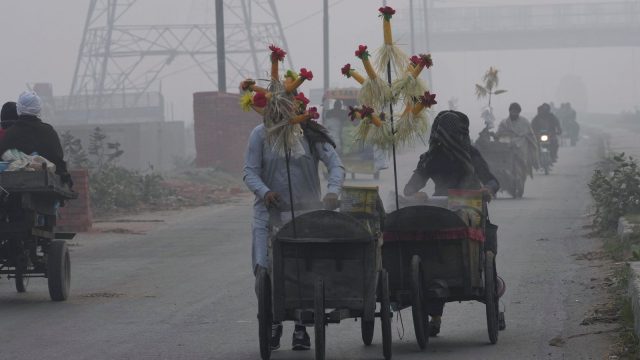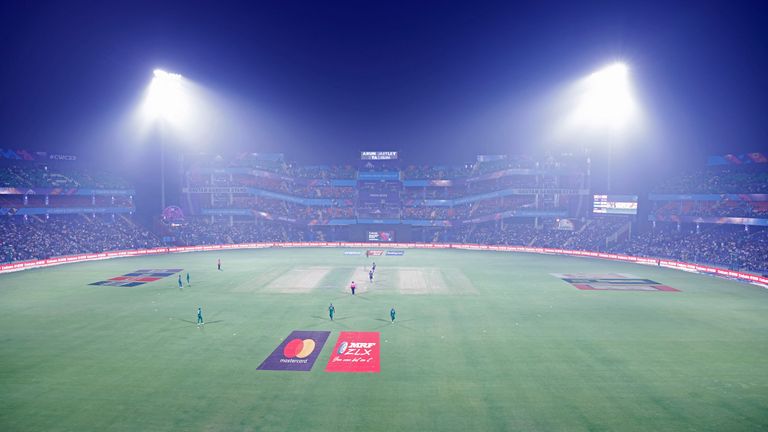Pollution-fuelled smog has shrouded major cities across South Asia this week, with businesses and schools forced to close in some areas.
As of midday on Friday, four of the top five cities with the worst air quality in the world were in South Asia, with the only outlier in nearby Indonesia.
Pakistan, India, Nepal and Bangladesh have all been blighted by toxic air, which appears to be mostly caused by a combination of pollution and relatively cooler temperatures.
The Air Quality Index (AQI) – a measure developed by government agencies – puts Kolkata in India as the most polluted city in the world, followed by the country’s capital, New Delhi, in second.
Indonesia’s capital, Jakarta, Bangladesh’s capital, Dhaka, and Nepalese capital Kathmandu made up the top five.
The smog has been keenly felt in recent days in Lahore, Pakistan, which had an AQI of 432 on Wednesday, before dropping to 103 on Friday.
Anything over 301 is considered hazardous – the most serious ranking – while a score above 101 is a warning for sensitive groups, such as children, the elderly, those with respiratory conditions and pregnant women.
As a result, schools and markets have been closed in the city of more than 11 million people and the wider Punjab region – home to 110 million in total – from Thursday to Sunday.
Offices, restaurants and businesses, aside from priority services like hospitals and courts, have all shut in a bid to limit movement outside, as ordered in a directive from the provincial government.
But it hasn’t stopped tens of thousands from falling sick, according to officials, as doctors advise the population to wear face masks and stay at home.
Many have reported coughing and breathing problems in Lahore, which was once known as the city of gardens in the 19th century.
Experts say the burning of crop residue at the start of the winter wheat-planting season is a key cause of the pollution.
More generally, growing industrialisation in South Asia in recent decades has fuelled a rise in pollutants emanating from factories and vehicles in densely populated areas.
The problem becomes more severe in cooler months, as a temperature inversion prevents a layer of warm air from rising and traps pollutants closer to the ground.
Smog at the World Cup
In neighbouring India, which is hosting the cricket World Cup, authorities in New Delhi announced they would restrict the use of vehicles for a week from Monday as air quality remained dangerously unsafe despite mitigation efforts.
Cricket players have chosen to remain indoors at times in New Delhi, with Bangladesh’s team cancelling a training session earlier this week and Sri Lanka’s squad wearing masks.
Primary schools were also shut in the capital until Friday.
Overnight rain brought some relief on Friday morning, while air in the financial capital of Mumbai also improved due to showers in nearby coastal areas.
Read more:
‘Near certainty’ 2023 will be Earth’s hottest year on record
Major fossil fuel producing countries ‘risk blowing climate targets’
Scientists are considering seeding clouds in New Delhi – a process that involves spreading substances that can encourage rain – to trigger heavy showers.
Friday’s rain comes two days before the Diwali festival, when many defy a ban on firecrackers, causing a spike in air pollution.
In Nepal, Kathmandu had an AQI of 128 on Friday afternoon, while Bangladesh’s capital, Dhaka, ranked at 156 – considered “unhealthy” on the index.
The World Health Organisation has repeatedly found air pollution to be the leading risk factor for death and disability in Nepal.














![Business tycoon in Novrongo to bury late father in a car [Video]](https://ghananewss.com/storage/2023/05/business-tycoon-100x75.jpeg)






